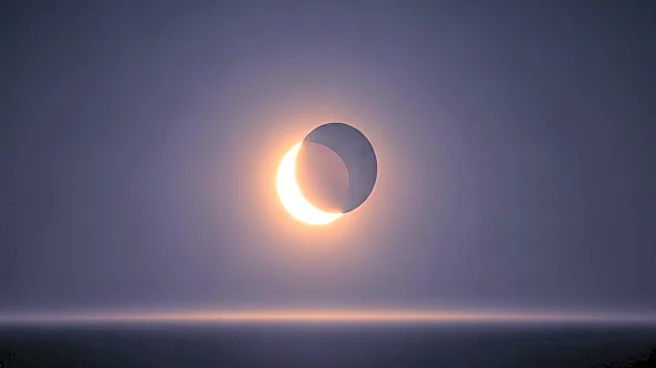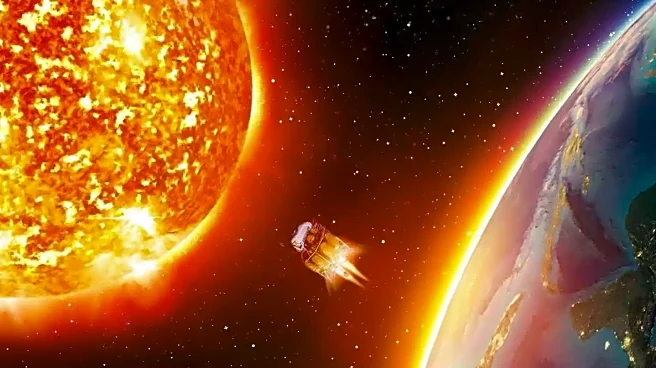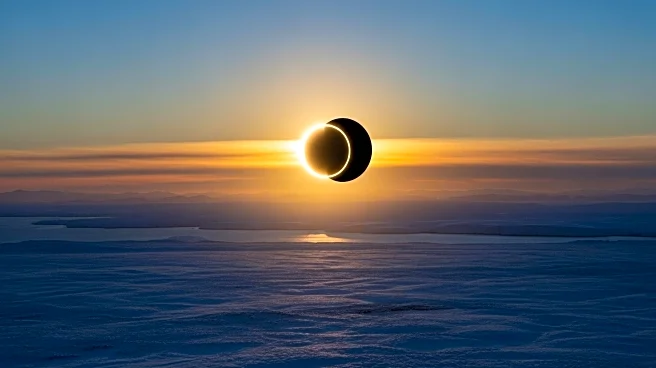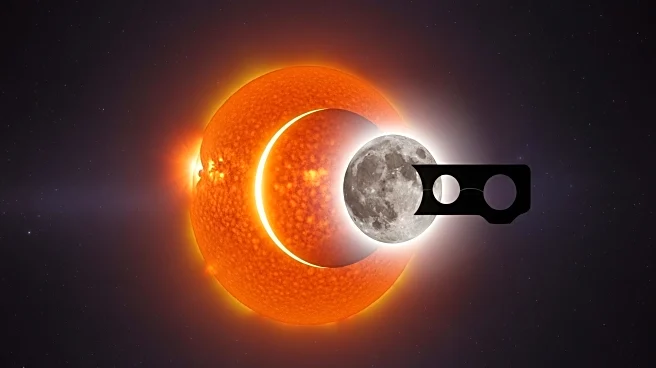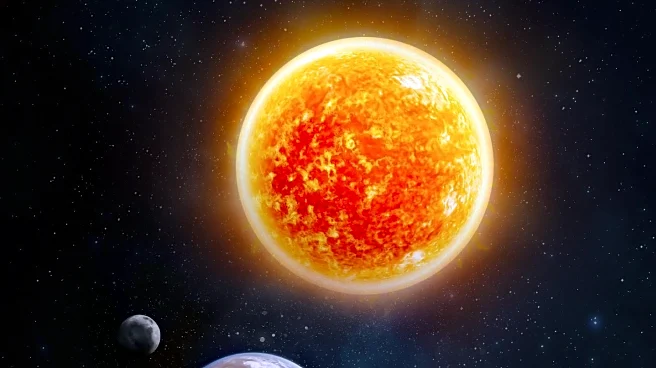What's Happening?
The last solar eclipse of 2025, occurring on September 21, is a partial solar eclipse visible primarily in the Southern Hemisphere, including regions such as Australia, Antarctica, and the Pacific Ocean. The eclipse will not be visible in India, and therefore, the traditional period of inauspiciousness known as Sutak Kaal will not apply there. However, it may be observed in regions where the eclipse is visible. The partial eclipse involves the moon covering a portion of the sun, offering a dramatic visual for those in the visibility zone. Observers are advised to use protective eyewear throughout the event to prevent eye damage.
Why It's Important?
Solar eclipses hold significant cultural and spiritual importance in many regions, often accompanied by traditional practices and beliefs. The event provides an opportunity for communities to engage in meditation, prayer, and other spiritual activities, reflecting the cultural dimensions of celestial phenomena. Additionally, the eclipse serves as a reminder of the scientific principles governing the movement of celestial bodies, offering educational opportunities for those interested in astronomy. The visibility of the eclipse in specific regions highlights the global nature of such events, fostering international collaboration in scientific observation and public engagement.
Beyond the Headlines
The eclipse's occurrence in the Southern Hemisphere underscores the diverse cultural interpretations and practices associated with solar events. In regions where the eclipse is visible, traditional practices such as staying indoors, covering idols, and avoiding certain activities are observed, reflecting the intersection of science and spirituality. These practices highlight the cultural significance of celestial events and their impact on societal norms and beliefs. The eclipse also serves as a reminder of the importance of safety measures, emphasizing the role of scientific organizations in promoting safe viewing practices.

